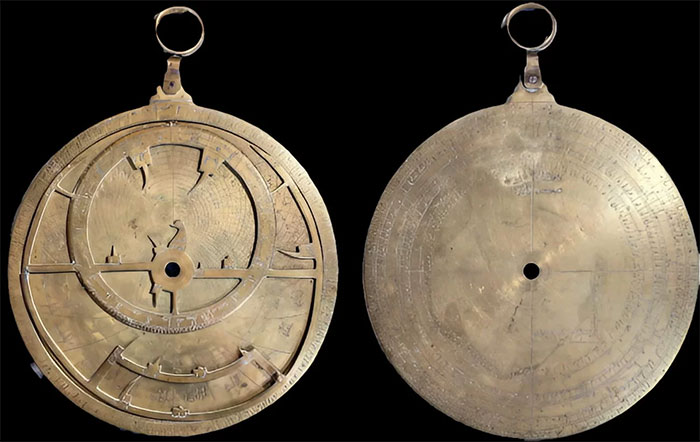The Verona astrolabe is not only a treasure for the astronomers but also evidence of something that seems to exist only in modern times.
According to new research, led by historian Federica Gigante from the University of Cambridge (UK) and the Italian Museum in Verona, an astronomical instrument of Spanish origin is strong evidence of international cooperation. in science across borders and cultures since 1,000 years ago.
 Verona astrolabe, a 1,000-year-old astronomical instrument – (Photo: ITALIAN MUSEUM IN VERONA).
Verona astrolabe, a 1,000-year-old astronomical instrument – (Photo: ITALIAN MUSEUM IN VERONA).
Dating back to the 11th century, the circular bronze instrument is an astrolabe that has probably traveled through many lands and passed through many different owners – according to Science Alert.
An astrolabe is a tool used to chart the sky, used by mankind for centuries. They include a map of the sky and a system of rotating parts, allowing the user to calculate position in a given space and time.
The oldest astrolabe was found in Greece, but it was the Muslims who improved and perfected this instrument.
It is evidence of scientific exchange between Arabs, Jews and Christians .
The content on the astrolabe also shows that at least three separate users felt the need for additional translations and edits of the object to better accommodate new understandings. Two of them use Hebrew and one uses a Western language.
Meanwhile, its original style of manufacture is consistent with other astrolabes known to have originated in Al-Andalus, a region inhabited by Muslims in Spain in the 11th century. The original writing on it was also Arabic.
The initial star coordinates on this astrolabe also agree with the star coordinates of other astronomical instruments of the same period.
As for the engravings on objects, they speak of a rich cultural history. Some Arabic inscriptions are prayer lines. Some other lines name the owner as Isànq and the maker as Yungus.
The Hebrew inscriptions added later include translations for the constellations and some other astrological knowledge. Then, another person adjusted the latitude on both sides of the scale using Western Arabic numerals, the same Latin numerals we use today.





